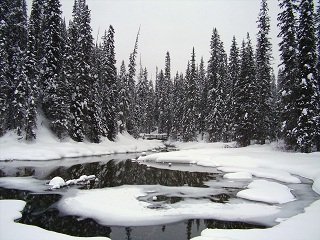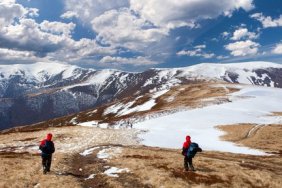 With winter steadily approaching, you’ll undoubtedly notice a more consistent temperature change in the air and in the waters. I’ve even started scraping ice off my car this week, much to my disgust. That being said, knowing how to safely meander throughout the outdoors during the colder months is a key skill to have. As someone who has fallen through ice and nearly died of hypothermia before, I can tell you that it’s not fun. Today, I’ve provided you with some tips that will help you if—God forbid—the same ever happens to you.
With winter steadily approaching, you’ll undoubtedly notice a more consistent temperature change in the air and in the waters. I’ve even started scraping ice off my car this week, much to my disgust. That being said, knowing how to safely meander throughout the outdoors during the colder months is a key skill to have. As someone who has fallen through ice and nearly died of hypothermia before, I can tell you that it’s not fun. Today, I’ve provided you with some tips that will help you if—God forbid—the same ever happens to you.
If your venture into the wilderness brings you to frozen bodies of water, the first thing you’ll want to do is check the ice as you make your way across it. Some outdoorsmen carry an axe and hack at the ice every few steps when they’re unsure of its thickness. If you hear a deep thump, then the ice is thick enough to sustain your weight.
Knowing where the potential thin patches of ice are in a body of water is useful. More often than not, the ice nearest to the shore will be the thickest ice. However, each body of water is different and has its own currents and geography. For instance, river inlets/outlets, springs, potential warm water from discharges, and objects such as logs, rocks and beaver dams are all potentially thin ice hotspots. Steer clear of them when navigating the ice.
If you’re walking along the ice and you hear or feel it cracking, react immediately. Throw yourself backward right away and spread your arms and legs to distribute your body weight. Doing so is a great measure against becoming completely submerged should you fall through. Should the worst happen and you fall in, gain traction any way you can. It’s smart to carry awls around your neck if you know you’ll be potentially crossing ice during your trip.
Once you make your way out of the water, crawl away from the hole. Once you’re a safe distance from it, find fresh, dry snow to rub on your clothes. This lighter snow is very absorbent and will soak up the moisture from the water and will go a long way towards preserving your warmth.
I wish I would have known the tips outlined above before I found myself floating downriver in February a few years ago. I lived to tell the tale, however, and have since taken the time to learn more so that I can share what I’ve learned from the experience with others. Hopefully, your winter hiking doesn’t lead to disaster, but if the tips I’ve provided today can save a life, then I consider that a win in my book.








